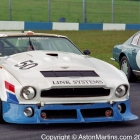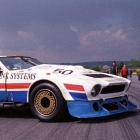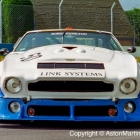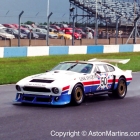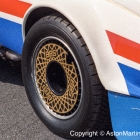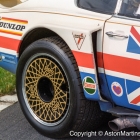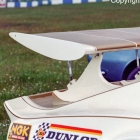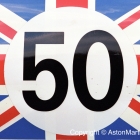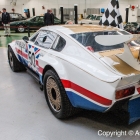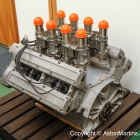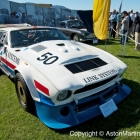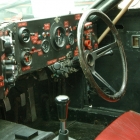For 1978, RHAM/1 was even more modified with and output of 800bhp assisted by twin Garret AiResearch turbos. Unfortunately, fuel consumption dropped to as little as 2.5mpg (for the 1977 race, the average speed was 5.75 mpg) so the entry to Le Mans was withdrawn with only two weeks before the race.
By 1979, the shape of RHAM/1 was dramatically altered with a lowered roof, steeply raked windscreen, huge front airdam and lowered bonnet line. Both the fitting of fuel injection in place of the Weber carbs and reducing boost pressure to give maximum power of 650 bhp helped to reduce fuel consumption to around 4 mpg. During the 1979 Le Mans 24 hour race (with the same set of drivers as 1977), the car unfortunately had only competed for 2 hours 45 minutes when a connecting rod broke due to a melted and holed piston.
In 1980, the car competed in the Silverstone 6 hours race, RHAM/1 now sporting a huge rear wing – still fitted to this day. After just 61.5 miles, the rear hub failed. Just for something a little different, in October 1980, RHAM/1 broke the world caravan towing record at almost 125mph, on the runway at Elvington Airfield, Yorkshire. With his first hand experience at Le Mans, Robin Hamilton went on to develop the Aston Martin Nimrod Group C racing car in the early 1980’s.
Whilst this could never be seen as a works car, support was provided by the factory, and indeed lessons learned from the wind tunnel were applied to the V8 Vantage in the form of front air dam and rear spoiler. But not quite on the same extreme scale as this car though.




